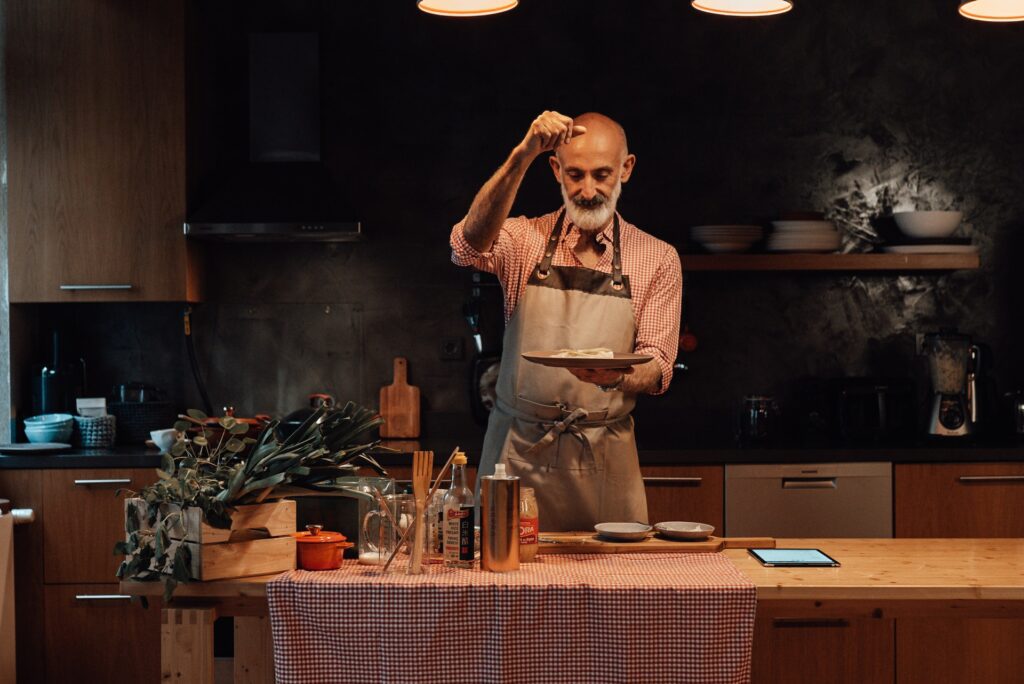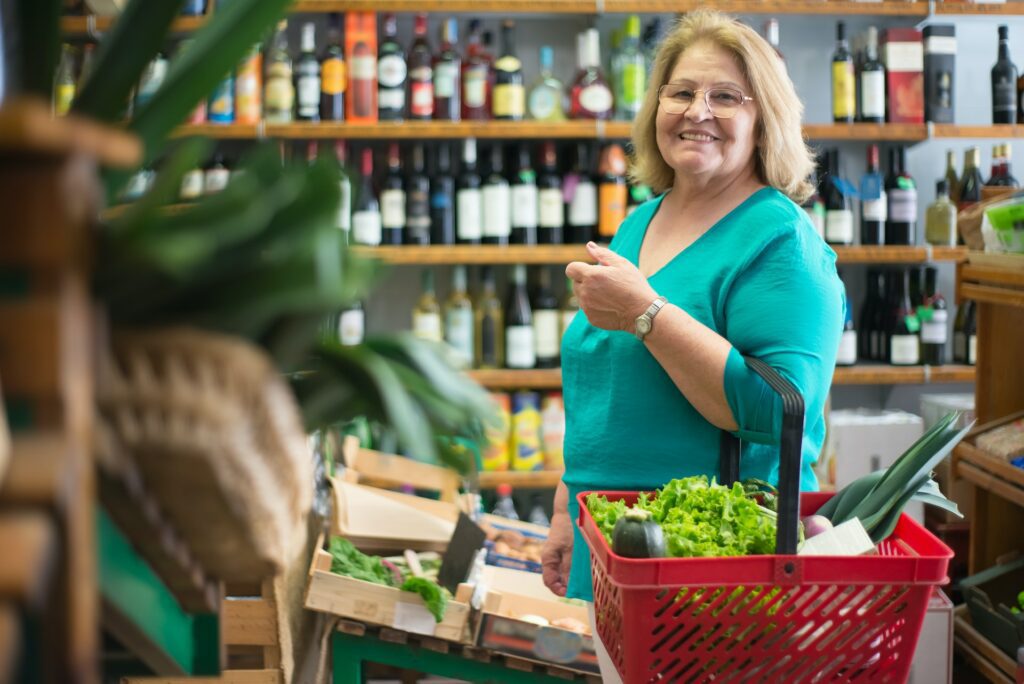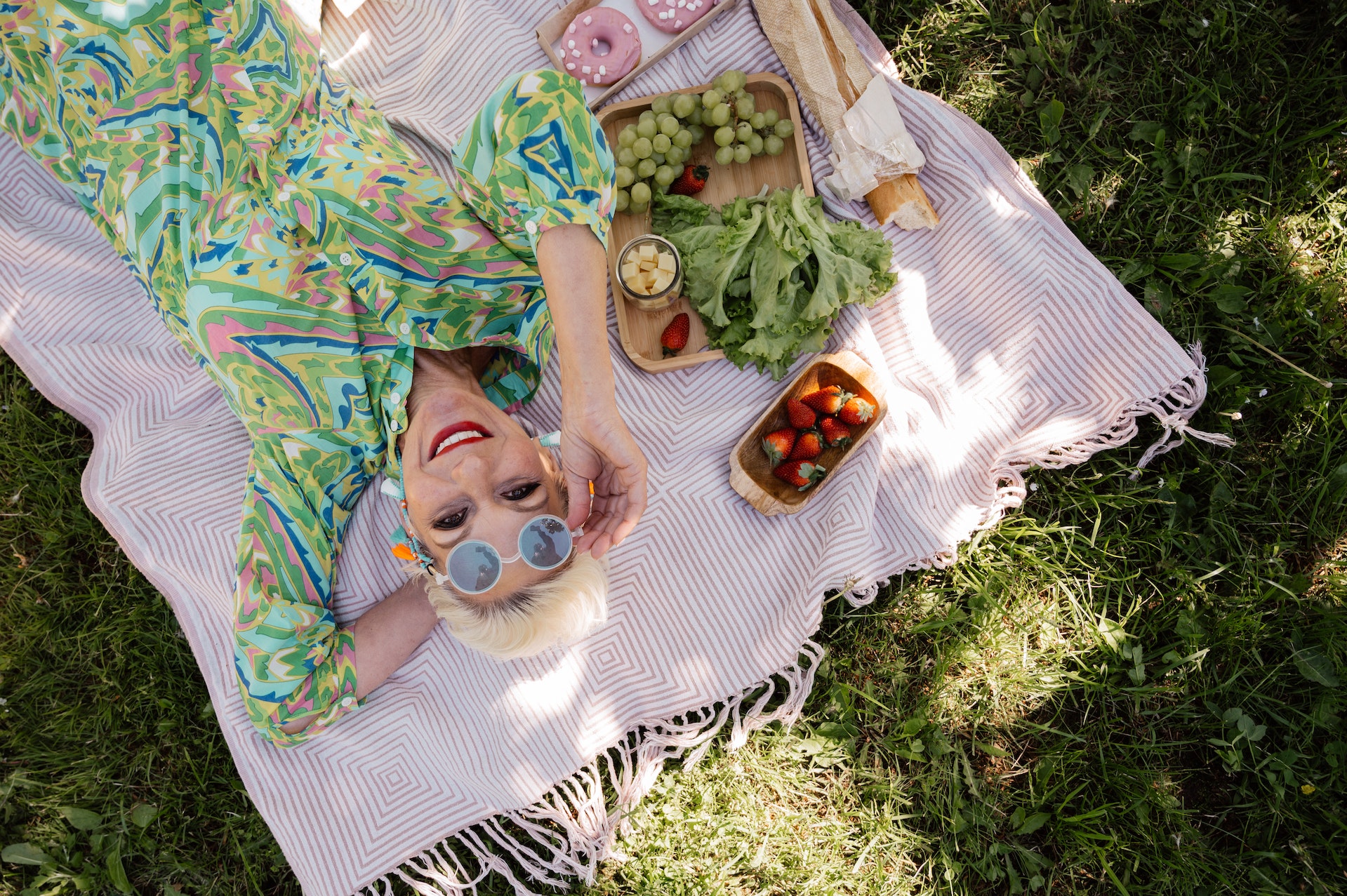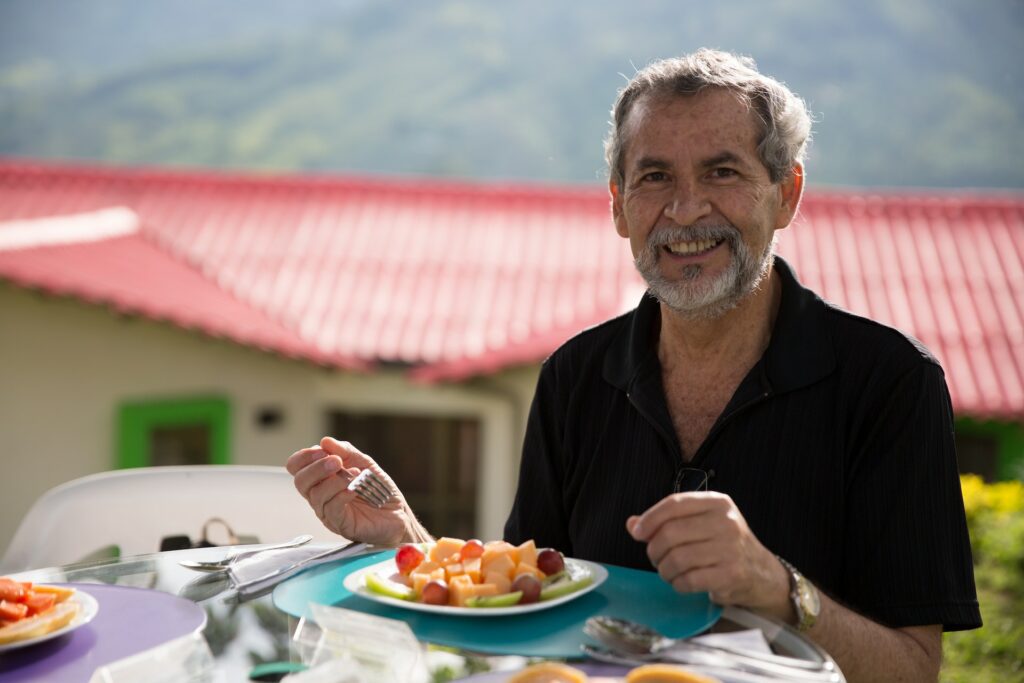Cooking For Seniors: A Guide To Healthy Techniques
Cooking is an essential life skill that becomes even more important as we age. Seniors who have retired and are living independently often find it challenging to prepare meals that are nutritious, delicious, and easy to make.
In this guide, we’ll discuss the best techniques for cooking for seniors, with a focus on making meals that are healthy, simple, and satisfying. Whether you’re a senior yourself or you’re cooking for a loved one, this guide will help you create meals that are both nourishing and enjoyable.
Steps To Healthy Cooking For Seniors
Eating a variety of healthy foods is advantageous for staying healthy and preventing long-term illnesses. You can attain this by following a well-balanced diet that contains the recommended amounts of food from each of the five food categories.
But you don’t have to entirely abandon your favorite meals, you just need to make small adjustments and plan ahead to incorporate healthier options into your diet. These changes can have a lasting, positive impact on your health.
Here are some steps you may follow when cooking meals for yourself or an older loved one.
1. Assess Your Nutritional Needs
Contrary to common belief, the process of preparing healthy meals for seniors does not begin at the grocery store. It commences with conducting research on the types of food that offer maximum nutritional value for the money spent. This involves;
- Accessing resources such as ChooseMyPlate.gov to learn about the composition of a healthy diet.
- Consulting the National Institute on Aging for suggested serving sizes and portion control.
- Learning how to read nutrition labels and identify essential nutrients.
2. Shop Healthy
After assessing your nutritional needs, your next step is figuring out what foods to buy to reach those needs. Also, healthy cooking requires healthy ingredients as well.
Here are some shopping tips for you to follow;
- Create a list of things you need to buy and decide on the meals you’ll prepare before you go shopping.
- Ensure that your pantry always has readily available ingredients that can be quickly cooked and prepared.
- Purchase seasonal produce, including vegetables, fruits, whole grains, nuts, and seeds.
- Opt for reduced-fat versions of certain foods, such as milk, cheese, yogurt, salad dressings, and gravies if they are available.
- Choose lean cuts of meat and skinless chicken breasts over their fatty counterparts.
- Reduce your intake of high-fat foods like fast food, chips, crisps, processed meats, pastries, and pies.
3. Get Cooking
Moving on to cooking and preparing meals, it’s important that you know how to properly cook the foods you brought.
As much as possible you want to reduce or balance the fat, sodium, and calories of the food you cook.
Here are some tips to cut sodium and unhealthy fats from your meals.
3a. Low fat Cooking Techniques
- Use nonstick cooking spray for sautéing instead of butter, margarine, or oil
- Add low-fat or fat-free condiments to food, such as salad dressing, mayonnaise, etc.
- Substitute applesauce, plain nonfat yogurt, or pureed fruit for oil or butter in baked products
- Trim visible fat from meat and remove chicken skin after cooking to keep more moisture
- Try low-fat cheeses like cottage cheese, skim milk mozzarella, etc.
- Remove fat beads from soups, stews, and casseroles
- Substitute low-fat meats like turkey, fish, pork loin, etc., and drain excess fat after cooking
- Replace whole eggs in recipes with egg substitutes or egg whites
- Use 1% or skim milk instead of whole milk in recipes
- Add vegetables, beans, or whole grains to burgers, meatloaf, chili, and stews
- Coat chicken or fish in breadcrumbs instead of batter for cooking
- Use fat-free broth or milk in mashed potatoes, soups, gravies, and stews
- Season food with herbs, spices, lemon juice, red wine vinegar, or salsa instead of butter and cream
- Use low-fat cooking methods like broiling, grilling, roasting, baking, microwaving, poaching, and steaming
- Try fat-free evaporated milk in soups and casseroles instead of heavy cream
- Limit adding condiments to food during cooking and preparation.
3b. Low Sodium Cooking Techniques
- Replace salt with onions, garlic, herbs, spices, citrus juices, and vinegars to enhance the taste.
- To reduce sodium by up to 40%, drain and rinse canned beans (such as chickpeas, kidney beans, etc.) and vegetables.
- Combine standard and lower-sodium versions of food to reduce salt intake. Try blending them in equal amounts if you don’t like the taste of low-sodium food. This technique is particularly effective for broths, soups, and tomato-based pasta sauces.
- When cooking pasta, rice, and hot cereal, don’t add salt. Since you’re likely to use other flavorful components, you won’t miss the salt.
- To bring out natural flavors, cook by grilling, braising, roasting, searing, and sautéing. This will reduce the need for salt.
- To counteract the effects of sodium and possibly lower blood pressure, incorporate potassium-rich foods such as sweet potatoes, potatoes, greens, tomatoes and lower-sodium tomato sauce, white beans, kidney beans, nonfat yogurt, oranges, bananas, and cantaloupe.
Read Also: Enhancing Flavor and Nutrition: The Benefits of Spices and Herbs in the Diet of Older Adults
The Best Cooking Method For Seniors
Maintaining a healthy diet is crucial for everyone, but it’s not always feasible to make nutritious choices. Although there’s a vast selection of ready-made microwavable meals at the grocery store, they often contain high amounts of salt, sugar, fat, and calories.
To improve dietary choices, a preferable option is to plan meals in advance or prepare and freeze them in bulk.
As people age, their taste and smell senses decline, so it’s essential to consider softer and less spicy foods for the elderly.
Therefore, braising, boiling, and steaming are excellent ways to prepare food for older individuals.
It’s best to use boneless and skinless meats and ensure that they aren’t tough, chewy, or have bones.
Avoid foods with coarse, stringy, hard, or dry textures, sticky foods, and those that tend to crumble easily.
Essential Cooking Tools and Utensils for Seniors
Another essential in improving your cooking techniques is having the right kitchen tools, especially for seniors whose mobility changes due to aging.
Luckily there are inexpensive kitchen tools that can make cooking easier for seniors. Here are some adaptive kitchen tools recommended by Caring Senior Service.
- Jar Opener
For any senior’s kitchen, a jar opener is an essential item that doesn’t have to break the bank. You can find a wide range of options at kitchen stores and online, including openers designed specifically for arthritis sufferers and the elderly. Look for a jar opener with a no-slip grip that can easily open various sizes of lids, from small drink bottles to larger food jars.
- Ergonomic Can Opener
Seniors who have limited mobility or strength and find it challenging to grip things may struggle with regular can openers. To solve this problem, try an ergonomic can opener with a non-slip design and an easy-to-turn knob.
- Reaching Stick
A reaching stick, also known as a reacher grabber, grabber stick, or pick-up tool, is an extendable stick with a grabber at the end that enables seniors to reach items they can’t reach on shelves or pick up off the floor, especially those with back or neck issues, arthritis, or who are confined to wheelchairs.
- Anti-Fatigue Floor Mat
If your senior spends a lot of time cooking or cleaning in the kitchen, an anti-fatigue floor mat can be a game-changer. It reduces pressure on feet, knees, and lower back, providing a secure and stable surface to stand on.
- Magnifying Glass
A magnifying glass can be a lifesaver for seniors in the kitchen, especially when it’s lighted, has an ergonomic handle, and provides sufficient magnification for comfortable use.
- Batter Pen
A batter pen simplifies the process of getting batter from the bowl to the cupcake pans or drawing designs in pancake batter in a frying pan. The batter goes into the pen, and a simple squirt sends it into the cupcake liners.
- Kitchen Timers
Kitchen timers are an excellent way to provide gentle reminders while cooking, ensuring that seniors don’t forget about food left on the stove or in the oven.
- Mini Bundt Pans
Mini bundt pans solve the problem of bundt cakes being too big. Seniors can keep one and give three away to friends or neighbors, making them the perfect size.
- Talking Microwave Oven
Microwave ovens that talk can confirm the power, time, and other settings that you selected, preventing wasted time and burnt meals. However, these appliances are only convenient if they can be operated correctly.
- Cut-Resistant Gloves
Cut-resistant gloves, some stronger than leather, can protect seniors’ precious hands from injuries caused by knives, graters, scissors, and other sharp objects.
- Auto Shut-Off Stoves
Auto shut-off stoves prevent fires when no motion is detected for a specified period of time, even if the food is still being cooked.
- Rocker Knife
A rocker knife is an excellent tool for cutting vegetables, cheese, or meat on a cutting board with one hand and a rocking motion, providing greater stability for many seniors.
- Soft Grip Kitchen Shears
A good pair of kitchen shears with a soft-grip handle can cut through anything from delicate herbs to tough jerky and be used for other projects around the house.
- Mixing Bowl with Grip
Mixing bowls with grip edges or handles can make holding a bowl in one hand with a mixer in the other less difficult, especially for seniors with less hand strength.
- LED Faucet Lights
LED faucet lights indicate when the water is hot or cold, preventing burns caused by hot water.
- Cookie Spritz Gun
A cookie spritz gun eliminates the need to roll out dough and use cookie cutters, allowing seniors to use a wide range of disks with different designs to easily press dough onto a cookie sheet.
- Non-Stick Cooking Pan
Non-stick cooking pans, including cast iron, make cooking easier and safer by preventing food from sticking and potentially causing burns.
Safety Tips in the Kitchen For Seniors
Although you probably came here for the cooking techniques, a great part of making healthy meals and enjoyable cooking experience is making sure your kitchen is safe since kitchens can present safety hazards, ranging from slips and falls to fires, that seniors should be cautious of and take preventative measures against.
So here are some safety checklists to ensure safety in the kitchen.
- Remove dish towels hanging near the stove to prevent accidental fires.
- Keep potholders and plastic utensils away from the stove burners.
- Check curtain length to avoid them brushing against the stove burners.
- Encourage safe clothing choices while cooking, like wearing short sleeves.
- Regularly clean the kitchen ventilation system to avoid fires.
- Install a working smoke detector in the kitchen that alerts for both flames and smoke.
- Keep an easy-to-use fire extinguisher in the kitchen and review instructions for using it.
- Set a timer when cooking to avoid forgetting about pots simmering on the stove.
- Ensure adequate lighting in the stove and countertop area.
- Store knives, kitchen shears, and other sharp utensils safely.
Food Safety Tips for Older Adults
Another thing that you need to be cautious about is the safety when handling food. When cooking for a senior citizen, it’s important to follow these 8 food safety tips from Senior Helpers:
- When buying perishables like meat, fish, poultry, and dairy products, purchase them at the end of your grocery trip and group them together in your cart to keep them fresh until checkout.
- Inspect fresh produce closely, discarding any that are rotten, bruised, or covered in mold.
- Pay close attention to “Best Before” dates on food labels, particularly with refrigerated products and ready-to-eat items, and never consume anything that’s past its expiration date.
- Refrigerate or freeze raw meat, seafood, and poultry immediately after purchasing them.
- Use separate cutting boards, dishes, and cooking utensils when preparing raw and ready-to-eat foods to avoid spreading bacteria.
- Wash your hands before and after handling any food items, and in between handling raw and cooked foods.
- Regularly clean kitchen surfaces, dishes, and utensils with mild soap and hot water after preparing meals to prevent the growth and spread of dangerous bacteria.
- Cook food to the proper internal temperature, with poultry and ground meat reaching 165 degrees Fahrenheit and roasts and steaks reaching a minimum of 145 degrees Fahrenheit. A digital thermometer can help ensure that the right temperature is reached before serving.
Bottomline
Cooking for seniors requires a bit of knowledge and planning, but it can be a rewarding and enjoyable experience for both the cook and the senior. By using the best techniques for cooking and preparing meals, seniors can maintain their independence, stay healthy, and enjoy delicious food that is easy to make.
We hope that this guide has been helpful in providing tips and ideas for cooking for seniors, and we wish you all the best in your culinary endeavors!
Sources
- https://www.fivestarseniorliving.com/blog/kitchen-safety-checklist-for-older-adults-and-their-family-caregivers
- https://hsc.unm.edu/medicine/departments/pediatrics/divisions/continuum-of-care/pdf/low-fat-cooking-techniques.pdf
- https://www.heart.org/en/healthy-living/healthy-eating/eat-smart/sodium/how-to-reduce-sodium






